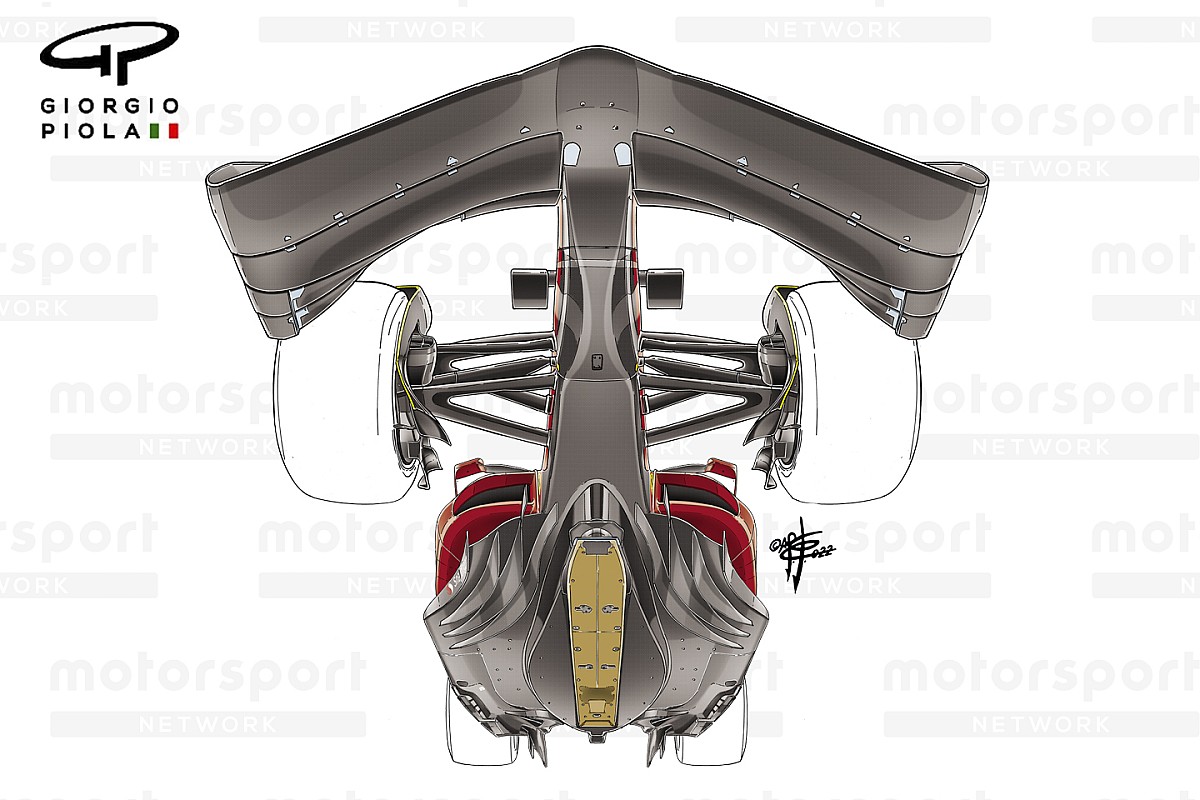
Amid growing concerns from drivers at the start of the season about potential safety implications of excessive bouncing, the FIA felt it had no option but to intervene in order to prevent the type of severe up and down movements that were commonplace in the opening part of the season.
The FIA’s main focus was on the introduction of an ‘Aerodynamic Oscillation Metric’, in order to limit the amount of porpoising and bouncing that the drivers are having to endure.
However, the scope of that tool was expanded to include tougher measures on flexible floors and planks because the FIA felt that there needed to be a level playing field among teams about how they were dealing with the phenomenon.
The governing body’s measures, which were set out in a revised Technical Directive issued to the teams at the British Grand Prix, will be introduced at the Belgian Grand Prix, having initially been scheduled for the French Grand Prix.
While teams staying inside the AOM metric will be something they will all need to be mindful of, it is the new flexi floor clampdown that could pose bigger headaches up and down the pitlane.
The flexi floor intrigue mainly focused on the way that some teams have cleverly exploited grey areas of the rules to get more flexibility in the plank that runs underneath their car.
For those that are unaware, the plank sits below the central surface of the floor body and governs how low the car can be run, given its thickness. It must not be worn by more than 1mm, with its conformity checked at the periphery of six precisely placed 50mm holes.
Deflection of no more than 1mm is permissible when the car is supported at the two holes 1080mm behind the front axle line, and 2mm at the rearmost hole whilst supported on 70mm pads on the FIA’s test rig.
Some teams are believed to have made use of the way the measurements were done with the car supported on weights to build in a degree of movement to the way the plank was fitted to the car.
When checked, with the car's weight pushing it down, the plank's fixtures were fully compressed and so stiff enough to comply with the rules.
But out on track, and without nearly 800kg pressing down, these materials expanded to allowed a few millimetres more plank flexibility - enough for performance gains.
F1 teams are also permitted to make use of machined flush mounted titanium skids in and around the plank holes in order to limit wear, of which there are numerous ancillary regulations governing their size, shape and fixings.
These skids are usually the reason as to why we see sparks from the underside of the car as they come into contact with the track's surface. However, the plank itself will also be scorched by the friction that’s involved, making the study of the wear patterns an interesting observational game in its own right.
The previous generation of F1 cars saw most of the teams design cars with a significant amount of rake, with the nose down attitude placing a premium on the front of the plank in terms of wear.
This led, on several occasions, to the FIA creating new criteria in order to combat any trickery that might have been resulting in a performance advantage by teams flexing the plank in this area of the car to get the front of the car even lower to the ground.
In much the same way, the FIA is now combating a change in approach for the latest generation of cars. Rather than high rake being the way to go with the 2022 ground effect machines, instead they need to be more stiffly sprung and are run low and flat to the ground. As a consequence they exhibit a different behaviour to their predecessors.

Some teams are understood to have divided up sections of the skids around the edge of the prescribed holes. Some of these are more flexible than the rest and move up and down when load is applied to them.
This is in order that, as this section comes into contact with the track's surface, it retracts upwards, reducing wear compared to the more stiffer areas. This ensures that at the end of a race, this ‘moveable’ section remains unworn to ensure that the car fully complies with the rules.
Teams have been able to exploit having these different sections due to the pads that measure static flexion in the FIA scrutineering bay being 20mm larger in diameter than the holes. Therefore any sectional differences in the surface are overlapped by the pad.
In order to counteract this, the FIA’s new technical directive stipulates that “The local stiffness around the periphery of these three holes for a radial distance of 15mm outside the periphery must be uniform, with a variance not exceeding +/- 10%”.
Furthermore, Article 3.5.9.e regarding wear to the plank is being expanded upon too, with compliance now required around 75% of the hole's periphery.
Both these measures will effectively outlaw the moveable skid block practice, so any team that had been doing that will now need to run their car in a different way.
It might seem unfair for the governing body to make changes at the midpoint in a season but, in accordance with Article 3.15.1 of the technical regulations, the FIA reserves the right to introduce further load/deflection tests on any part of the bodywork which appears to be (or is suspected of), moving whilst the car is in motion.
It remains to be seen if these changes will have a dramatic effect on the pecking order, but there are undoubtedly teams that will have to make modifications to fall in line, and that may hinder the development path they’ve been on and force them in new directions.
This could be a costly exercise, not only from a financial perspective but also in terms of having to make a U-turn in a development sense.







